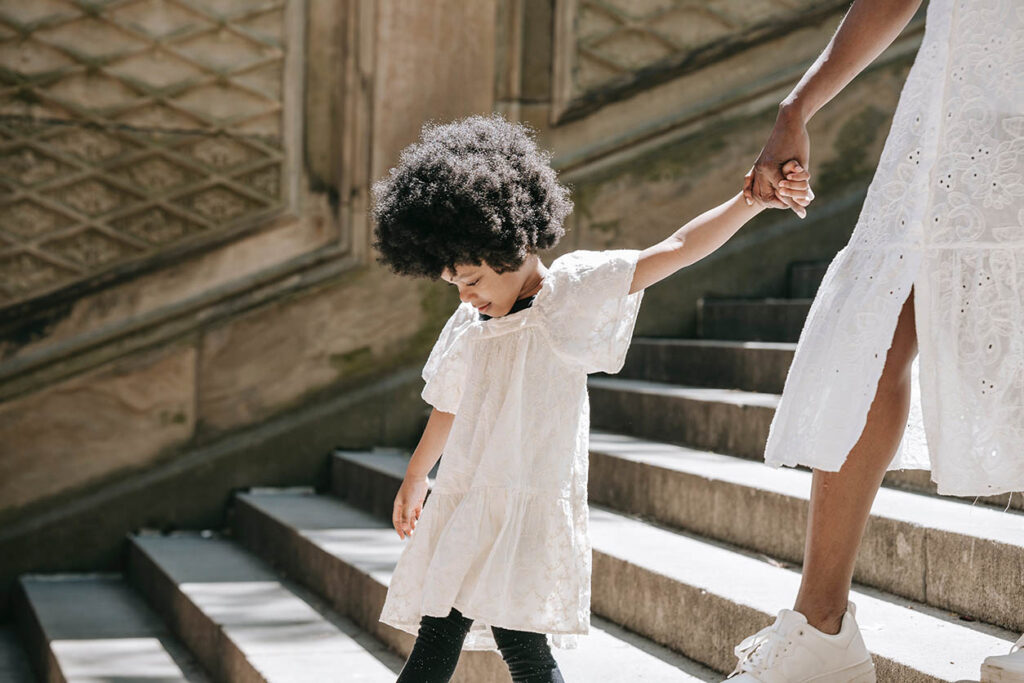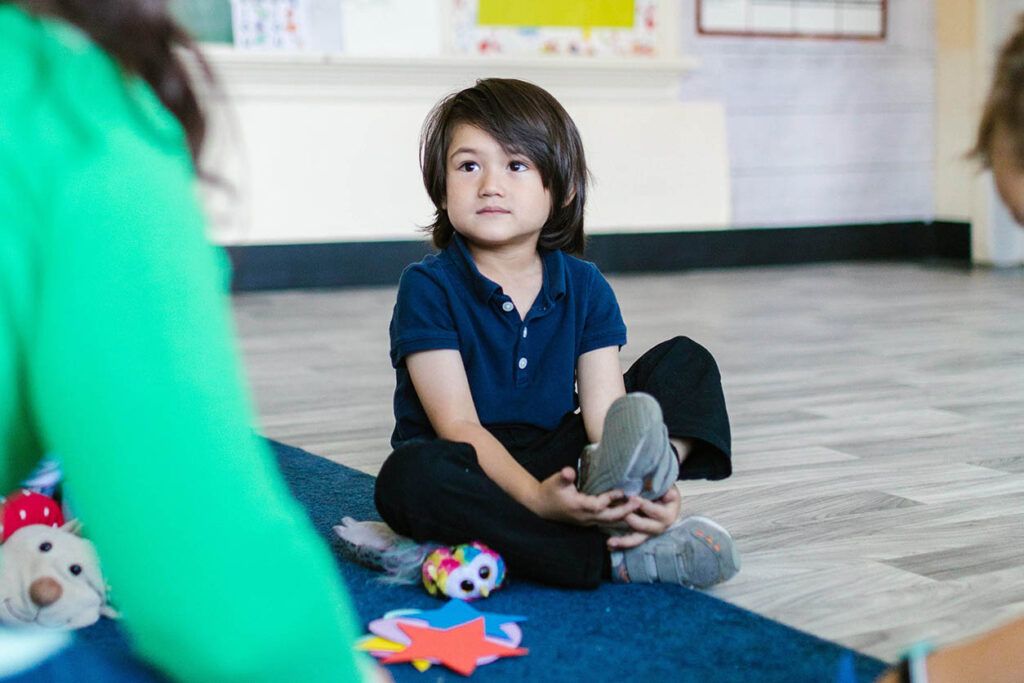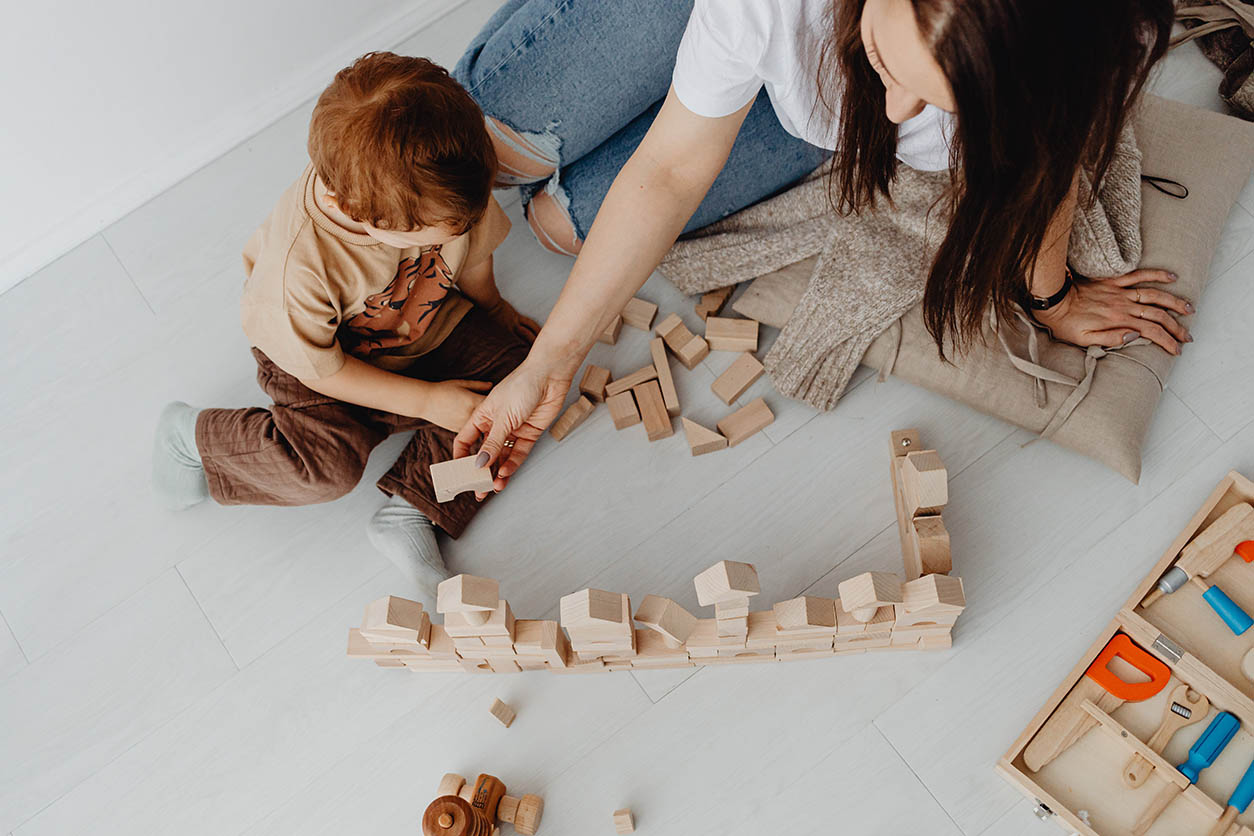There is a lot of discussion about the importance of self-regulation in young children. It is interconnected with social and emotional development and cognitive development. It is important for positive outcomes in all areas of life. The term “self-regulation” may sound academic, but the definition is relatively straightforward. “Self-regulation is the process of planning, guiding, and monitoring one’s own attention and behavior” (Berk and Winsler, p. 171, 1995). However, each of these words describes a complex set of understandings and behaviors. Caregivers need to acknowledge the seeds of self-regulation in young children and understand and acknowledge their attempts.
For example, planning for an infant, toddler, and preschooler looks very different. When we see a baby removing their sock, it may not have started with a plan. As we observe, we see that through trial and error, she removes the sock. When it comes time to remove the other sock, it is easier; she has learned something, and now she has a plan in place. Toddlers make a plan to get dressed, and they may not get everything the right way or on the right foot, but their planning needs to be acknowledged. When we focus on what the child didn’t get right, we undermine their confidence in their ability to plan and execute.

🚶♂️💫 #ChildDevelopment #EmpowerKids
Guiding is something we see early but may not recognize as a self-regulation skill.
When a young child takes your hand to lead you where they want you to go, they guide you. You may not want to take this guidance at this moment for any number of reasons, but again, we need to acknowledge this attempt to guide.
When a baby or a toddler starts to move towards something and pauses to look around for the OK from an adult, they are beginning to monitor their behavior. At least three outcomes may occur. One is that this is a safe route forward, and the adult will nod or smile, and the child moves towards their goal. In this case, you are supporting their choice and their attempt to self-monitor their behavior. Another possibility is that it is not a safe route. When the adult indicates this, the child complies with a different route or choice. Another possibility is that the adult suggests this is not a safe route, and the child chooses to keep going anyway. This choice is a teachable moment. Of course, you will redirect to a safer route. As you do this, remind the child that they paused to check with you and acknowledge how important that was. In this case, you praise them for the pause, the beginning of self-monitoring, while redirecting them toward better behavior.

Children learn the foundational skills for self-regulation in the first five years of life (Blair 2002; Galinsky 2010). Early childhood teachers play an essential role in helping young children learn self-regulation through modeling and scaffolding.
Let’s embark on this educational journey together!
Elevate your understanding of early childhood education and child development with my engaging preschool education workshops tailored for both teachers and parents. These workshops provide valuable insights, practical strategies, and effective tools to enhance your role in nurturing young minds. Whether you’re an educator or a parent, these sessions aim to empower you with the knowledge and skills essential for fostering a positive learning environment. Dive deeper into the world of preschool education and child development by exploring my workshop offerings. For more valuable content and updates, follow me on Instagram and connect with me on LinkedIn. #EarlyYearsConsult
#EarlyChildhoodEducation #ChildDevelopment #PreschoolWorkshops #EducatorServices #ParentingTips #LearnAndGrow

